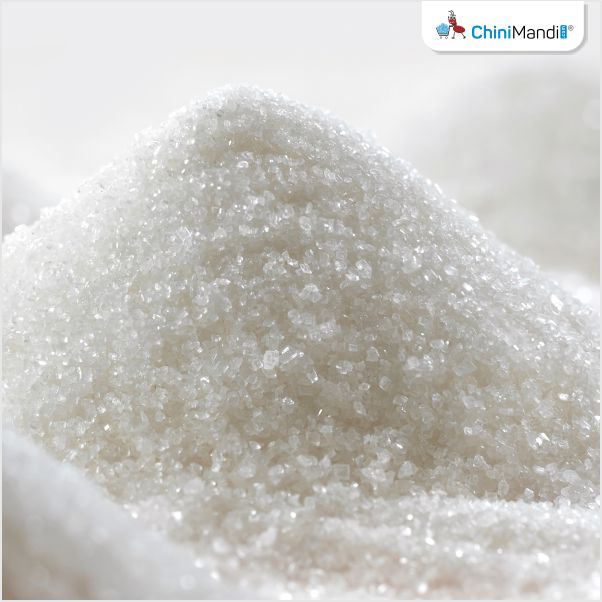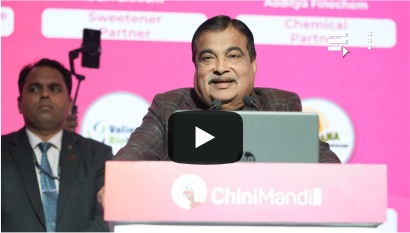The International Sugar Organization (ISO) released its first comprehensive set of estimates for the global 2025/26 sugar balance.
ISO’s fundamental view of the global supply/demand situation sees a global deficit (the difference between forecast world consumption and production) of just 0.231 million tonnes. A global deficit of this magnitude, ahead of the start of the season, can be considered as negligible, although the narrowing of the deficit compared to 2024/25’s revised figure of 4.879 mln tonnes is significant. World production in 2025/26 was estimated at 180.593 mln tonnes, up 5.419 mln tonnes from last season, with increased production in India, Thailand and Pakistan. World consumption is projected to reach 180.824 mln tonnes in 2025/26, up 0.771 mln tonnes on last season, while the 2023/24 estimate is revised to 181.639 mln tonnes, up from 179.225 mln tonnes previously, on submissions from ISO members. These revisions show consumption in 2023/24 set an all-time high.
According to the ISO, changes in trade dynamics are key market considerations. The estimated volume of trade in 2025/26 is anticipated to remain steady with exports totalling 63.890 mln tonnes, up from 63.323 mln tonnes last season, but far below the 2023/24 total of 69.342 mln tonnes. The trade flow outlook for 2025/26 is neutral as import demand is estimated at 63.768 mln tonnes. Trade statistics for 2024/25 show a surplus of 0.656 mln tonnes, with exports reaching 64.213 mln tonnes.
The sequence of global deficits now stretches back to the 2019/20 season, with stock having to be found and liquidated each season in order to alleviate the shortfall in production. This process has brought the projected season-ending stock total for 2025/26 to 92.489 mln tonnes, down more than 10 mln tonnes from the opening stock total in 2019/20.
The ending stocks/consumption ratio for 2025/26 is estimated to fall to 50.95%, some 10% below the figure from 6 seasons ago. As has been the norm over the last year, the ISO has also been reporting an adjusted stock total figure, to reflect losses in the refining process as well as stock updates from members. This is detailed in the first brief of the World Sugar Market section.
A summary of ISO’s world balance projected for 2025/26 and estimated for 2024/25 is provided below.

As per the ISO release, speculators have maintained a significant net-short position since June, when they doubled their directional participation to over 100,000 lots or 5 mln tonnes of sugar. This high level of activity continued through July, peaking in early August when a net-short position of 151,004 lots, or roughly 7.7 mln tonnes of sugar, was reached. Commodity basket indices have broadly maintained their net-long over the latest three months, although it remains at the low levels initially attained in May, as US tariff uncertainty and geopolitical risk in other parts of the world continues. The outlook for prices over the next three months remains neutral-to-bullish as the 2024/25 deficit, and its impact on global stock, is confirmed. The fundamental outlook for the 2025/26 season is neutral for prices.
Global fuel ethanol production is forecast to reach 120.6 bln litres in 2025, rising 1.7% from 118.6 bln litres in 2024, with consumption projected to grow more substantially to 120.5 bln litres, up 2.6% from 117.5 bln litres. This expansion continues, despite economic headwinds and trade tensions, underscoring the structural strength of renewable fuel mandates worldwide. Nevertheless, regional dynamics reveal significant shifts, with US production reaching record levels of 61.5 bln litres supported by new trade agreements with the UK, EU, and Japan, while Brazil’s cane-based ethanol output faces pressure from increased sugar allocation, declining to 32.7 bln litres. India emerges as the standout growth market, with production projections revised upward to 9.5 bln litres as the country advances toward its 20% blending target, marking a shift toward grain-based feedstocks that now account for over 60% of production.
“Both EU cane and beet molasses prices recovered in June. Beet molasses prices in the EU are likely to trend higher as local supplies are expected to fall significantly in 2025/26. For cane molasses, continuing trade impediments, due to India’s export tax, and increasingly complex logistics will see constrained availability to the world market, also suggesting world prices could be supported going forward. World molasses production is to rise from 65.3 mln tonnes in 2024/25 to 69.8 mln tonnes in 2025/26, a new record. Of the forecast 4.5 mln tonne increase in global production, 3.9 mln tonnes would be in Asia. Excluding Brazil (where molasses is mostly used within the industry) global molasses production in 2025/26 is forecaset to rise to a seven year high of 51.8 mln tonnes (up 8% on the 2024/25 level of 47.8 mln tonnes). Global exportable supplies of molasses are remaining tight in 2025. Top exporters in the first half of 2025 have been Indonesia, Thailand, Australia, Egypt and in Central and North America, El Salvador, Guatemala and Mexico. Pakistan is likely to resume exporting significant volumes of molasses to the world market after losing its preferential access to the EU ethanol market,” ISO stated further in a release.
The bioplastics sector faces both regulatory uncertainty and technological advancement. The sixth round of UN Global Plastics Treaty negotiations concluded without agreement in August 2025, leaving manufacturers uncertain about sustainability targets and delaying regulatory certainty for the transition from conventional to bio-based plastics. However, industry innovation continues with breakthrough developments including leaf-inspired LEAFF bioplastics that match petrochemical strength while biodegrading at room temperature, and TotalEnergies Corbion unveiling the world’s first commercially recycled PLA.
The WTO elected Mr. Diego Alfieri of Brazil is the new Chair for Committee on Agriculture. Persistent divergences remain in views on how to achieve concrete and meaningful outcomes at the 14th WTO Ministerial Conference (MC14) in March 2026. WTO members have voiced support for realistic and pragmatic, results-oriented work and stress the need for credible, concrete outcomes for agriculture.
Regional Trade Agreements – Canada and Indonesia have finalised an FTA. Ethiopia has published its AfCFTA tariff concessions. The EU and Ukraine have agreed, in principal, a revised version of the Deep and Comprehensive Free Trade Area (DCFTA). India and the UK have signed a Comprehensive Economic and Trade Agreement (CETA). The Trump Round of trade negotiations set an August 1st deadline for new trade agreements with the US to avoid steep, country-specific tariffs.

















